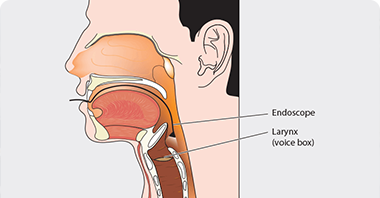

Head and neck cancers arise in multiple sites and sub sites, mostly detected so late that the oncological treatment encompasses extensive surgery and post-operative functional defects to the individual causing significant cosmetic changes, difficulties in swallowing, chewing, breathing and speaking. Hence early detection of these tumours in one of the main factors in treatment success. Efforts to achieve the earliest detection of malignant disease have led to the development of new endoscopic examination methods. Endoscopic examination has hence become a corner stone for the diagnosis and treatment of cancers of the upper aero digestive tract. However, a laryngoscope with conventional white light (CWL) has technical limitations in detecting small or superficial lesions on the mucosa. Narrow band imaging especially combined with magnifying endoscopy (ME) is useful for the detection of superficial squamous cell carcinoma (SCC) within the oropharynx, hypo pharynx, and oral cavity. Narrow band imaging (NBI) is a novel endoscopic technique enhances the diagnostic sensitivity of endoscopes for characterizing tissues by using narrow-bandwidth filters in a sequential red, green and blue illumination system. It exploits the neoangiogenetic pattern of vasculature, hence enabling to differentiate between benign & malignant/ premalignant condition. This filter cuts all wavelengths in illumination except two narrow wavelengths. One of these wavelengths is of 415 nm which corresponds to the peak absorption spectrum of haemoglobin to emphasize the image of capillary vessels on surface mucosa. Superficial lesions are identified by changes in the colour tone and irregularity of surface mucosa during endoscopic examinations.